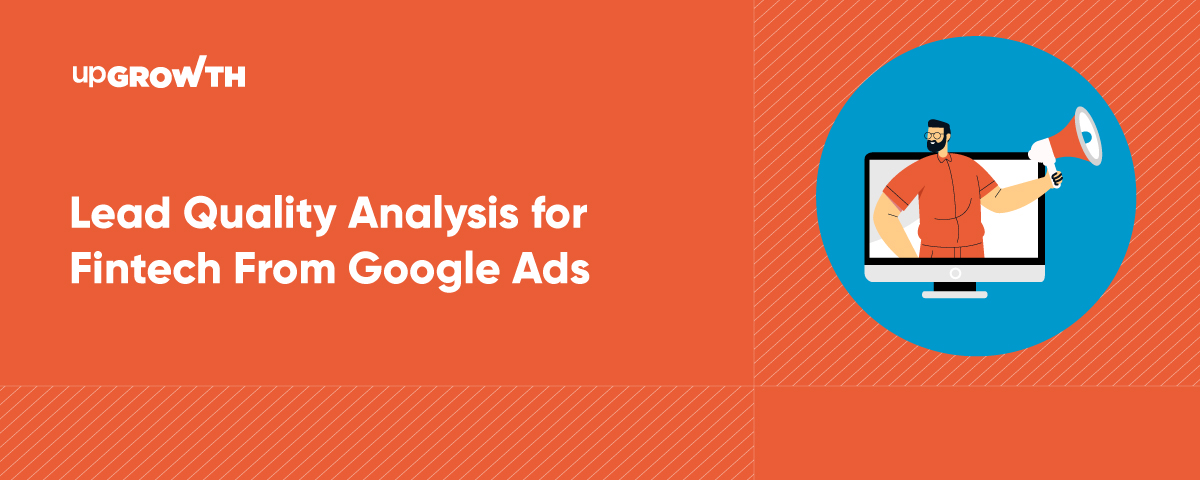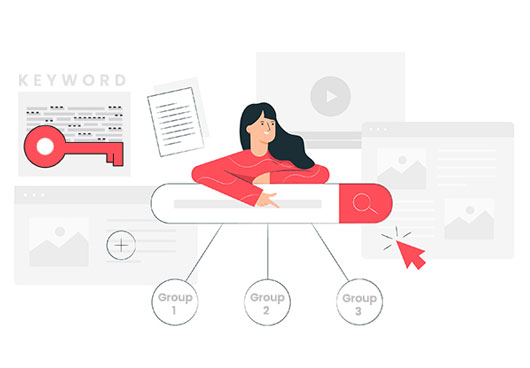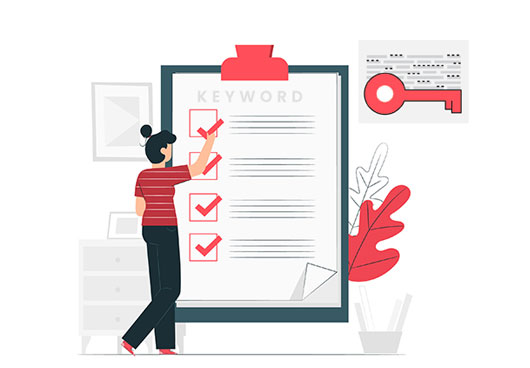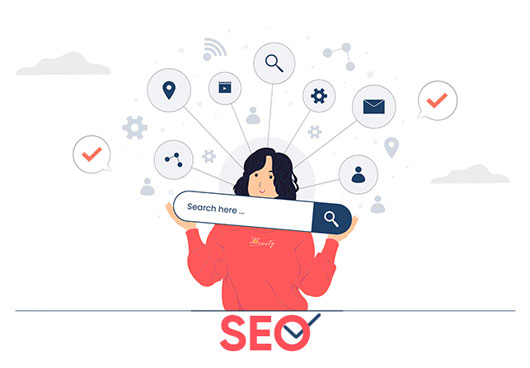Google Ads for Fintech: Key Strategies for Better Lead Generation
Contributors:
Kiran Gurung
Published: December 4, 2024

Summary
Explores how fintech companies can leverage Google Ads for effective lead generation, focusing on lead quality analysis and optimization strategies. The article covers essential metrics for measuring lead quality, common challenges in the fintech advertising space, and practical solutions for improving ROI through better targeting and conversion optimization. With real-world examples and actionable insights, it provides fintech marketers with a roadmap for generating and nurturing high-quality leads while maintaining compliance standards.
In fintech, securing high-quality leads through Google Ads is crucial, with 53% of marketers spending over half their budget on lead generation. A strong lead quality analysis strategy is vital, especially where compliance and conversion costs are high. This blog explores lead quality analysis, its importance for fintech, and how to generate and evaluate quality leads from Google Ads effectively.
What is lead quality analysis, and why is it essential for fintech businesses?
Lead quality analysis evaluates a lead’s potential to convert into a paying customer. For fintech, where acquiring a customer often entails lengthy verification processes, this step is critical to optimising time and resources. Poor-quality leads inflate costs and strain sales teams, while high-quality leads drive ROI and foster sustainable growth.
Key benefits of lead quality analysis in fintech:
- Higher ROI: Focusing on high-quality leads ensures marketing budgets are spent efficiently, driving profitable customer acquisitions and boosting ROI.
- Improved Sales Efficiency: By filtering out unqualified leads, sales teams can focus on high-intent prospects, speeding up sales cycles and optimising resources.
- Enhanced Customer Retention: High-quality leads lead to better-fit customers, fostering stronger engagement, loyalty, and long-term retention.
- Better Targeting and Personalisation: Lead analysis enables more accurate audience segmentation, allowing tailored marketing and product offerings that improve conversion and satisfaction.
- Reduced Risk of Fraud: Evaluating lead quality helps identify and screen out potentially fraudulent or high-risk customers, reducing exposure to scams and compliance issues.
Real-World Impact
Fintech firms using lead quality analysis reported a 20–30% reduction in customer acquisition costs while improving their overall conversion rates. By leveraging tools like predictive analytics, they identified patterns in lead behaviour that signalled higher conversion potential.
How do fintech companies define high-quality leads from Google Ads?
High-quality leads for fintech businesses go beyond basic demographic data. They are defined by multiple factors that indicate conversion readiness:
- Demographic Factors: Relevant leads match the target audience’s age, income, and location criteria.
- Behavioural Indicators: Search intent, session duration, and bounce rates show a lead’s engagement level.
- Compliance Readiness: Leads meeting Know Your Customer (KYC) and Anti-Money Laundering (AML) standards are critical for FinTech.
Industry Best Practices:
- Utilise Customer Personas: Develop detailed profiles of ideal customers to refine targeting.
- Google Analytics Insights: Use audience segmentation to identify users who match high-conversion profiles.
- Prioritise Intent-Driven Keywords: Targeting users searching for terms like “secure fintech solutions” often yields better-qualified leads.
What are the key metrics to measure lead quality in fintech campaigns?
To evaluate lead quality effectively, fintech businesses should focus on data-driven metrics rather than surface-level indicators like CTR:
- Conversion Rate (CR): Tracks the percentage of leads completing key actions like account registrations.
- Cost Per Acquisition (CPA): Measures the financial efficiency of acquiring a lead.
- Lead-to-Customer Rate: Analyses how many leads progress to paying customers.
- Lifetime Value (LTV): Assesses the long-term revenue potential of a customer.
Pro Tip: Integrate CRM platforms like Salesforce or HubSpot with Google Ads to holistically track and analyse these metrics.
How can fintech companies optimise Google Ads to generate high-quality leads?
1. Refine Targeting:
- Use high-intent keywords tailored to specific fintech products, like “low-interest loans” or “investment platforms.”
- Employ negative keywords to filter out irrelevant searches and save on costs.
2. Personalise Ad Copy:
- Create dynamic ads that highlight fintech-specific solutions. For example, ads for personal loans can mention quick approvals or low interest rates.
3. Optimise Landing Pages:
- Ensure your landing pages provide concise information, align with ad messaging, and load quickly.
- Incorporate trust signals, like user testimonials and certifications, to build credibility.
4. Leverage Retargeting Campaigns:
- Retarget users who visited your website but didn’t convert. Google Ads’ remarketing tools can help recapture their interest.
5. Monitor and Adapt:
- Regularly analyse campaign data and adjust strategies based on performance insights.
- Test ad variations using A/B testing to identify what resonates best with your audience.
What are the common challenges in analysing lead quality from Google Ads?
1. Data Overload:
Managing and interpreting large amounts of campaign data can be overwhelming without the right tools.
2. High CPA:
Fintech operates in highly competitive niches where keyword bids can inflate costs.
3. Multi-Touch Attribution:
Determining which campaign touchpoint converted a lead is challenging, especially for businesses using omnichannel marketing strategies.
4. Compliance Complications:
Changing regulatory requirements can disrupt campaign strategies and impact lead eligibility.
Solution: Employ AI-driven analytics platforms to handle complex data and identify trends. Additionally, compliance teams should be kept involved in campaign planning to mitigate risks.
How can lead quality analysis improve ROI for fintech businesses?
Effective lead quality analysis helps fintech firms allocate their budgets more efficiently. By targeting and nurturing high-quality leads, businesses can reduce acquisition costs and achieve higher customer satisfaction.
Real-World Example:
A fintech company specialising in digital wallets used lead scoring to prioritise users most likely to adopt their platform. This approach reduced CPA by 25% and increased user retention by 15%.
Actionable Steps:
- Use predictive analytics tools like Google’s Lookalike Audiences to target similar high-value customers.
- Implement CRM integrations to track how quality leads progress through the sales funnel.
In Conclusion
For fintech companies, lead quality analysis is crucial for efficient scaling in a competitive market. By targeting high-quality leads, businesses optimise marketing spending, streamline sales, and ensure compliance with regulations. Using tools like predictive analytics and CRM systems, companies improve targeting and conversion rates, boosting ROI and fostering long-term growth—partner with upGrowth for actionable, data-driven strategies to maximise your marketing success.
FAQs
1. How do you generate leads from Google Ads?
Generate leads by using high-intent keywords, optimising ad copy with clear CTAs, and ensuring user-friendly landing pages. Leverage tools like Google Ads Smart Bidding and audience segmentation for better targeting.
2. What is lead quality analysis, and why is it essential for fintech businesses?
Lead quality analysis evaluates the likelihood of a lead converting into a customer. Focusing on leads with high conversion potential is crucial for fintech to minimise wasted ad spend, optimise compliance efforts, and improve ROI.
3. How do fintech companies define high-quality leads from Google Ads?
Fintech companies identify high-quality leads based on demographic factors, behavioural signals, and compliance readiness, ensuring they are relevant and conversion-ready.
4. What are the key metrics to measure lead quality in fintech campaigns?
Key metrics include conversion rate, cost per acquisition, lead-to-customer rate, and lifetime value. These indicators help determine the efficiency and profitability of lead generation efforts.
5. How can fintech companies optimise Google Ads to generate high-quality leads?
Optimisation strategies include targeting precise keywords, using negative keywords to avoid irrelevant clicks, creating tailored ad copy, and refining landing pages to align with user expectations.
6. What are the common challenges in analysing lead quality from Google Ads?
Challenges include data overload, high costs per acquisition, attribution difficulties in multi-channel campaigns, and adapting to compliance changes that impact lead eligibility.
7. How can lead quality analysis improve ROI for fintech businesses?
By focusing on high-quality leads, businesses can reduce wasted ad spend, enhance sales efficiency, and improve customer retention, ultimately boosting ROI through better-targeted efforts.
8. How can AI and automation improve lead quality analysis in fintech?
AI and automation help identify high-value leads by analysing data patterns and optimising targeting in real-time. Tools like Smart Bidding ensure more efficient ad spending on qualified leads.
9. Why is lead nurturing important for improving lead quality in fintech?
Lead nurturing keeps prospects engaged with relevant content and personalised follow-ups, increasing the likelihood of conversion. It ensures that high-quality leads are nurtured into loyal customers.
About the Author
Copywriter at upGrowth
Kiran Gurung is a Copywriter at upGrowth, where she focuses on creating clear and engaging content that connects with audiences. With a strong background in marketing, she brings valuable experience to every project she works on. Kiran’s thoughtful approach and creativity have been an important part of upGrowth’s campaigns. When she’s not crafting captivating stories, Kiran finds inspiration in nature’s beauty and unwinds by immersing herself in Bollywood classics, blending creativity with her love for life’s vibrant moments.
 Growth Strategy and Planning
Growth Strategy and Planning Inbound Growth
Inbound Growth Growth Hacking
Growth Hacking Search Engine Optimization
Search Engine Optimization Paid and Performance Marketing
Paid and Performance Marketing Social Media Marketing
Social Media Marketing AI-Driven Growth Strategy
AI-Driven Growth Strategy AI-Native Workflow Automation
AI-Native Workflow Automation Generative Engine Optimization
Generative Engine Optimization
 Tools
Tools Growth Tools
Growth Tools Offers
Offers Quizzes
Quizzes Insights
Insights





















Leave a Reply